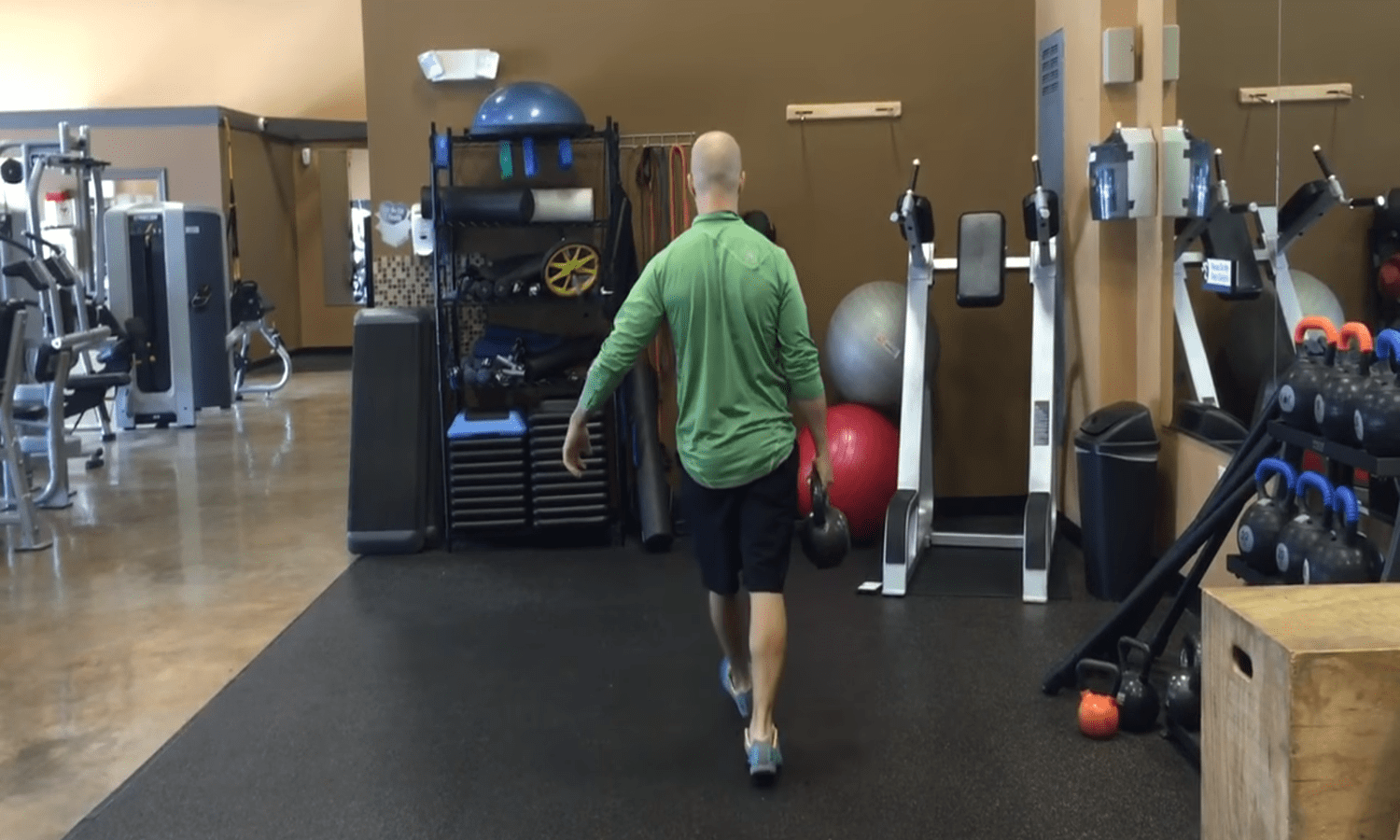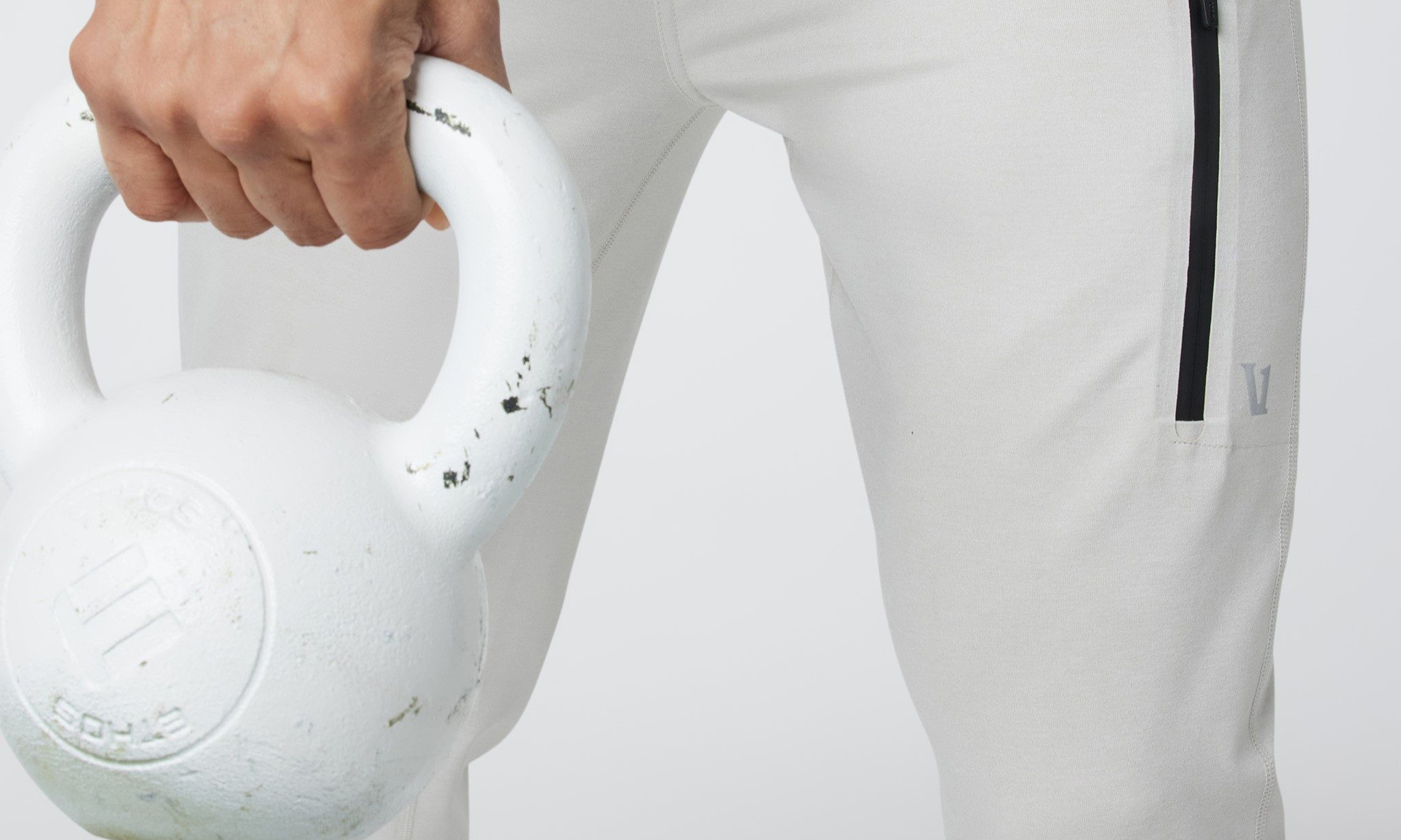I like kettlebells because the handle is easier to grip, and you can perform fun, primal moves like kettlebell swings. Kettlebell exercises can improve your strength, endurance, cardiovascular fitness, joint health, posture, and more. Research shows kettlebell exercises are effective for boosting muscle power, burning calories, and enhancing overall functional performance and fitness. When compared to standard weight-training routines, researchers found kettlebell exercises provided a significantly higher-intensity workout with faster and better results.
The one-mile kettlebell challenge is one of the latest fitness trends picking up steam. You don’t need to go to the gym, but you do need a kettlebell.
What is the one-mile kettlebell challenge?

As the name suggests, for the one-mile kettlebell challenge, you carry a kettlebell weighing around 30% of your body weight for one mile. For some men, the goal is around 53 pounds. You can either walk, run, or jog, and you can switch hands when and if you need to, but you have to continue for the whole mile, carrying the kettlebell in your hand like a suitcase, with your arm down by your sides. You can stop, take breaks, or rest if you need to. The goal is to simultaneously boost your strength, endurance, and aerobic capacity.
The author of the challenge is Mike Prevost, who published articles on forums and platforms like StrongFirst in 2019 or earlier. Prevost was inspired after working with runners as an exercise physiologist for the U.S. Naval Academy. For two decades, he searched for a way to train strength and aerobic capacity at the same time. Prevost’s in-depth research showed strength is a superior indicator of ruck performance compared to cardiovascular endurance under heavy loads.
Challenging yourself

Some people are ramping up the challenge by aiming to complete the kettlebell mile within a certain time, such as 16 minutes or less. You can time yourself and track your progress using a fitness tracker or an old-fashioned journal, and a stopwatch.
- Level 1 — Try finishing the mile in 16 minutes or less
- Level 2 — Try finishing the mile in 12 minutes or less
- Level 3 — Try finishing the mile in 10 minutes or less
Choosing the right weight

Ideally, the weight should be around 30% of your body weight, but if you’re a beginner, you might need to start off with a lighter weight. You can always incorporate progressive overload and gradually increase the weight over time as you get stronger and fitter.
One-mile kettlebell challenge variations

Dedicated fitness enthusiasts are taking this challenge to the next level by using two kettlebells or running a mile with the kettlebells overhead. It’s important you don’t push yourself too far and compromise your form, increasing your risk of injury.
The asymmetric load

Mike Prevost noted that hip instability was a problem for runners, and carrying an asymmetric load on one side of the body required more muscular strength of the torso to compensate and maintain balance. The weight on one side, along with the movement, naturally strengthened hip stabilizers and helped correct gaits, fine-tuning overall fitness and performance.
Farmer’s carry type exercises are usually only performed over shorter distances, so Prevost increased the distance to one mile for his challenge.
Top tips

If you decide to take on this challenge, here are some top tips to get started:
- Start with a lighter weight.
- Go for shorter distances of a quarter or a half mile until you develop endurance.
- Using a relatively flat local track is often recommended.
- You can try this challenge on a treadmill using a 1% incline to simulate walking or jogging outside.
- Stay hydrated and well-nourished, and get plenty of sleep the night before.




